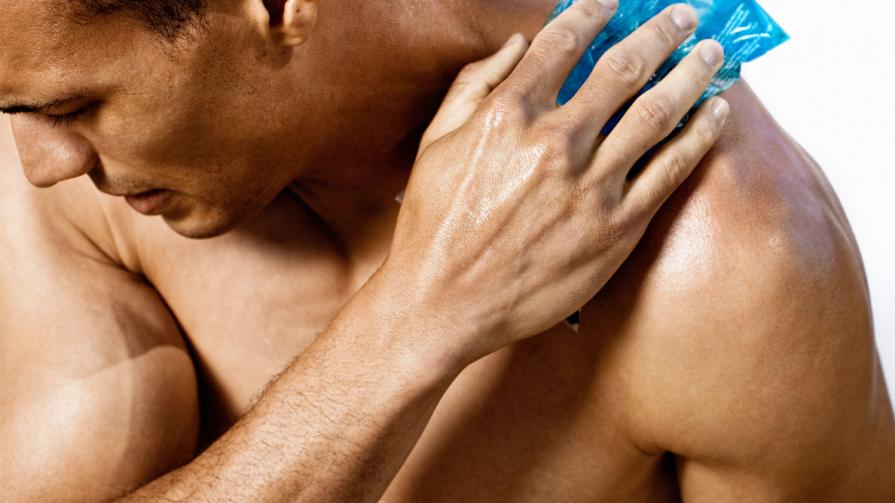Rotator Cuff Tear
What is a rotator cuff tear?
The Rotator cuff forms a group of four internal muscles that surround the shoulder joint.
Rotator cuff tears refer to tendon tears that are a common condition of middle age.
Acute tears can occur with acute sporting injuries in seasoned athletes or “weekend warriors”, or they can be chronic injuries as a result of wear and tear over time. Frequently patients may have “combination” injuries (ie acute on chronic tear)

- Swelling and pain in the shoulder and side of the arm
- Weakness of the shoulder, especially with overhead tasks or reaching outwards
- Pain felt when raising or lowering the arm
- Pain that causes you to wake from sleep, especially when sleeping on the affected shoulder
- Pain when reaching behind the back
“This can include arthritis, bone spurs, frozen shoulder, shoulder impingement and biceps tendon tears.
“An assessment with an experienced shoulder surgeon or sports medicine doctor, as well as imaging and physiotherapy are important.
“This is because early intervention can often prevent a partial tear that doesn’t require surgery from progressing into a full thickness tear that does.”
He says shoulder pain that persists for a few weeks should be investigated thoroughly, especially if there is ongoing weakness and limited range of motion in the shoulder.
“Untreated, the rotator cuff muscles around the shoulder joint may weaken and atrophy, leading to a worse prognosis for repair and recovery” he says.
“Untreated rotator cuff tears can also contribute to the development of frozen shoulder (adhesive capsulitis) which is characterised by pain and stiffness with loss of rotational mobility of the shoulder joint.”
- A fall onto an outstretched arm
- Lifting something too heavy
- Wear and tear and tendon thinning (tendonosis) that occurs with ageing
- Repetitive motions (such as baggage handling and lifting)
- Competitive sports such as rugby, tennis, weight lifting and martial arts
- Tradie’s shoulder – (painting, carpentry, baggage handling, garbage removal, and roofing are some of the many trades at increased risk)
Partial tears are often described as articular or bursal sided and often do not require surgery; whilst a full thickness tear almost always requires surgical repair.
A common type of partial tear is a PASTA lesion (Partial Articular Supraspinatus Tendon Avulsion) and is common in younger patients, particularly throwing athletes. It can be treated with physiotherapy, but may require surgery if non-operative measures fail, especially if the tear affects over 50% of the tendon thickness.
Generally a tear to the subscapularis, while less common, is more likely to require urgent surgical treatment, especially if the tear is large.
A tear affecting the teres minor tendon alone is a less common injury that can be treated non-surgically with rest, physical therapy and corticosteroid injections.
Steroid injections, anti-inflammatory medication and physiotherapy may all be useful in the treatment of rotator cuff tears. They reduce the inflammation caused by the acute injury whilst allowing the intact cuff to strengthen and compensate for the torn tendon.
For partial tears, good function can often be achieved without surgery, however full thickness rotator cuff tears are more at risk of requiring surgery.
If you are active and use your arm for overhead work or sports, and have persistent pain, then surgery is often recommended because many tears will not heal without surgery and may get larger with time.
Surgery is generally recommended if you have persistent pain or weakness in your shoulder that does not improve after several months of non-surgical treatments.
Surgery is also generally recommended when the tear is large (2- 3cm) and often recommended when the tear is caused by a recent, acute injury or is getting larger on serial scans.
- During a rotator cuff repair, the tendon is reattached to the bone of the humerus (at the humeral head tuberosity).
- This is done via minimally invasive arthroscopic surgery, using suture anchors.
- Bone spurs can also be removed (termed an acromioplasty) to prevent further tendon injury and to promote cuff healing.
- As an arthroscopic surgical procedure, performing rotator cuff repair surgery is a less painful procedure and is often done as a day surgical procedure.
- The recovery however, still requires the use of a sling for six weeks to protect the repair until it heals.
- Common side effects of rotator cuff surgery include pain and discomfort for a few days that can be managed with pain medication.
- Swelling and bruising are common, so ice packs can help.
- Physiotherapy is recommended to assist with stiffness and initially is allowed with a limited range of movement after surgery.
- Red flags after surgery include signs of infection (fever, redness at shoulder with drainage from the incision sites, pain that is worsening after five days). You should call our rooms promptly if you notice these symptoms.
- Very rare side effects include nerve damage that can lead to temporary or permanent sensory changes or weakness.
- Despite surgical repair a small number of cases may develop a retear, to minimise the risk it is important to use the sling for six weeks and avoid physical activities or lifting with the operated arm
- There is a risk of developing a frozen shoulder after surgery, which is minimised with early exercises (within the prescribed restrictions)
- As with any surgical procedure there is also a small risk of a minor or serious reaction from anaesthetic.

